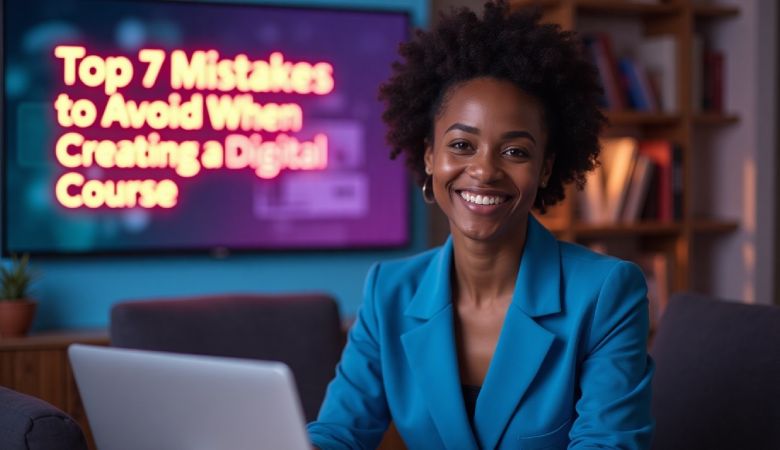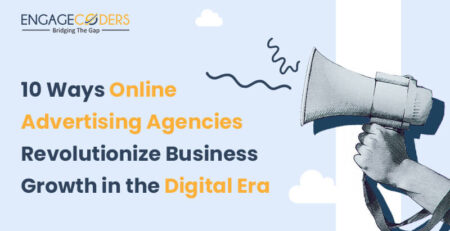Top 7 Mistakes to Avoid When Creating a Digital Course
Making mistakes is a normal part of creating a digital course. Many course creators go through this, and each mistake can teach us something helpful.
In this guide, we’ll go over some common mistakes that people don’t always talk about. By knowing about these early, we can save time, avoid problems, and build better courses. Let’s look at these so we can do things the right way from the start.
The 7 Biggest Mistakes Made as Digital Course Creators
1. Launching Without Hands-On Experience:
Even if the course topic changes over time, it’s still very important to have real-life experience in the subject we’re teaching.
Thinking of creating a course on real estate investing? That’s great, but it helps to actually have experience as a real estate investor. Want to guide hairstylists on opening their own salons? Wonderful, but it’s best to have opened a salon ourselves first.
In the rush to be seen as experts, many of us skip this step. That’s what happened with our first course, it didn’t do well at all because we didn’t have real experience in the topic we were teaching.
Here’s why real-life experience matters before launching a course:
- Trust: People need to believe that we know what we’re talking about. If we’ve done the work ourselves, it’s easier for them to trust us.
- Better Teaching: When we’ve faced challenges in the same field, it helps us explain things better and give useful advice that really works.
- Problem Solving: We’ve likely faced and solved many problems in the area we’re teaching. This lets us help students avoid common mistakes and handle problems with ease.
- Confidence: Going through the process ourselves gives us more confidence when teaching. It also helps students feel more confident about learning from us.
- Stronger Reputation: Over time, having real experience builds our name as someone who knows the field. This can lead to speaking chances, partnerships, and loyal followers.
We don’t need to be the top expert in the world, but we do need what some call a “10% edge.” That means knowing just a bit more than our students and having real experience we can share. That’s what makes a strong and helpful course.
2. Letting Imposter Syndrome Take Over:
Even with the right knowledge, we sometimes feel like we’re not good enough to teach. This is called imposter syndrome. It makes us doubt ourselves and worry about what others might think. These thoughts can slow down progress and make things harder than they need to be.
Here are some easy ways to deal with imposter syndrome:
- Celebrate small wins: Even small achievements matter. They show we’re moving forward.
- Focus on getting better, not being perfect: No one is perfect. The goal is to keep learning and growing.
- Be kind to yourself: Everyone feels unsure sometimes. That’s normal.
- Save positive feedback: Keep kind words and good reviews to remind ourselves we’re doing well.
Many people also feel they need to be experts in marketing or tech before starting. But that’s not true. We don’t need to know everything to create a great course. In fact, we don’t even need to have our course idea fully figured out.
3. Creating a Course Without Passion:
There was a time we built a course around something we weren’t excited about. The result? We didn’t even launch it. It felt like a waste of time and energy.
Before starting, it’s important to find what we’re truly interested in. Our course should be something we care about, something our audience needs, and something we know well. When all three things come together, we stay motivated and can teach with energy and excitement.
4. Spending Too Much Time Outside Our ‘Zone of Genius’:
Our ‘Zone of Genius’ is where we do our best work. It’s the mix of:
- What we love doing
- What we’re really good at
- What helps others most
As business owners, we often try to do everything ourselves. We might spend hours editing videos or handling small tasks that others could help with. We’ve made that mistake too, working on things that didn’t need our full attention.
When we hand over small tasks to others, we free up time to focus on bigger and more important parts of the business.
5. Believing Our First Course Had to Be Perfect:
In the beginning, we thought our first course had to be the best one ever made. We tried to include every idea, every detail, just to show how much we knew.
But here’s the truth: the first course doesn’t need to be perfect. It just needs to help others and offer value. Over time, we can make it better. Each time we launch it again, we can improve it based on feedback and experience. The goal is to start with one course. That’s enough to bring results. From there, we grow and make it better.
6. We Played It Too Small:
Have you ever heard the saying, “Go big or go home?” That really fits when it comes to launching a digital course. If we hold back by just sending a few emails or skipping using social media or webinars because we don’t feel ready, we’re only slowing down our progress.
In the beginning, we played it safe. We sent only a few emails and avoided using video because it felt uncomfortable. But here’s what we learned: video is one of the best ways to connect with people and grow a business. It helps others see who we are and what we offer.
Don’t wait too long to show up. Start small if needed, but keep showing up. Over time, it gets easier, and when it’s time to launch, we’ll feel more ready to go all in.
7. Not Staying Connected With Our Audience:
Let’s talk about email lists. Our list of subscribers is one of our most helpful tools. If we don’t stay in touch or offer useful content, we could hurt our course launch results without even realizing it.
Some people think their list is too small to make a difference. But that’s not true. We’ve seen others succeed with just 120 email subscribers, making thousands of dollars in just a few days. The key is to keep the list engaged. If we stay connected and give value, the response will be strong when the course is ready to launch.
It also helps to warm up the audience before the launch. Let them know what’s coming and get them excited.
So here’s the tip: Don’t wait until launch day to start talking. Share, connect, and build interest early. It makes a big difference.
Partner with our Digital Marketing Agency
Ask Engage Coders to create a comprehensive and inclusive digital marketing plan that takes your business to new heights.
You’re Ready to Create a Digital Course
Now that we’ve covered the mistakes, it’s time to take what we’ve learned and use it to build something great. Remember, this is a journey. There will always be lessons along the way. Keep learning, keep improving, and most of all, keep going.






